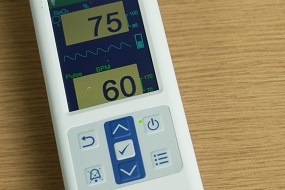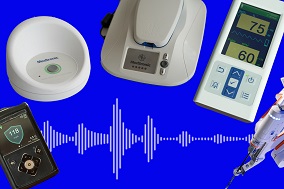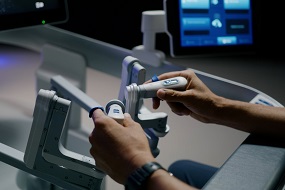Healthcare technology and the sound of patient experience
A five-part series on how device sounds are engineered with patients and healthcare providers in mind
Patients may sometimes prefer their medical devices stay silent, but it’s still imperative that they receive certain messages.
That’s why nursing student Marie Harries appreciates the vibration setting on her MiniMed™ 780G system.
“When I’m in the classroom setting, I don’t want sounds from the system to be disturbing other students and interrupting their learning experience,” said Marie, who compares the vibrations to the way a cellphone rings on vibrate. “But if it reaches a certain point where I haven't acknowledged the vibration, then it will start to make audible noises which I really appreciate. I find it particularly helpful at night when I'm sleeping.”
Those audible interruptions are intentionally designed for moments when urgency matters.
Alert, alert
One of the primary purposes for sounds in medical devices is to provide an alert, or alarm. An alert may notify you that you need to take an action like recharge a battery or even replace your device.
But maybe the warning is more critical. The frequency range, timing, and pattern of the sound communicate the level of the severity of the warning to the person using the device. Alarms may come in varying degrees of severity from low to high – think of yellow, orange, or red alarms.
Low-level alarms may be softer and only need to sound off every few hours, but an alarm alerting of an imminent threat to health may be louder and play until the problem is addressed.
In the final installment of our Sound Up series, learn how engineers are also working to design sounds aimed at combatting alarm fatigue in clinical settings.
Important Safety Information for Insulin Infusion Pumps
Successful operation of insulin infusion pumps requires adequate vision and hearing to recognize alerts and alarms. Rx required. Please visit https://bit.ly/importantsafety for additional details.
L00108162023
Other stories in our Sound Up! Series:




